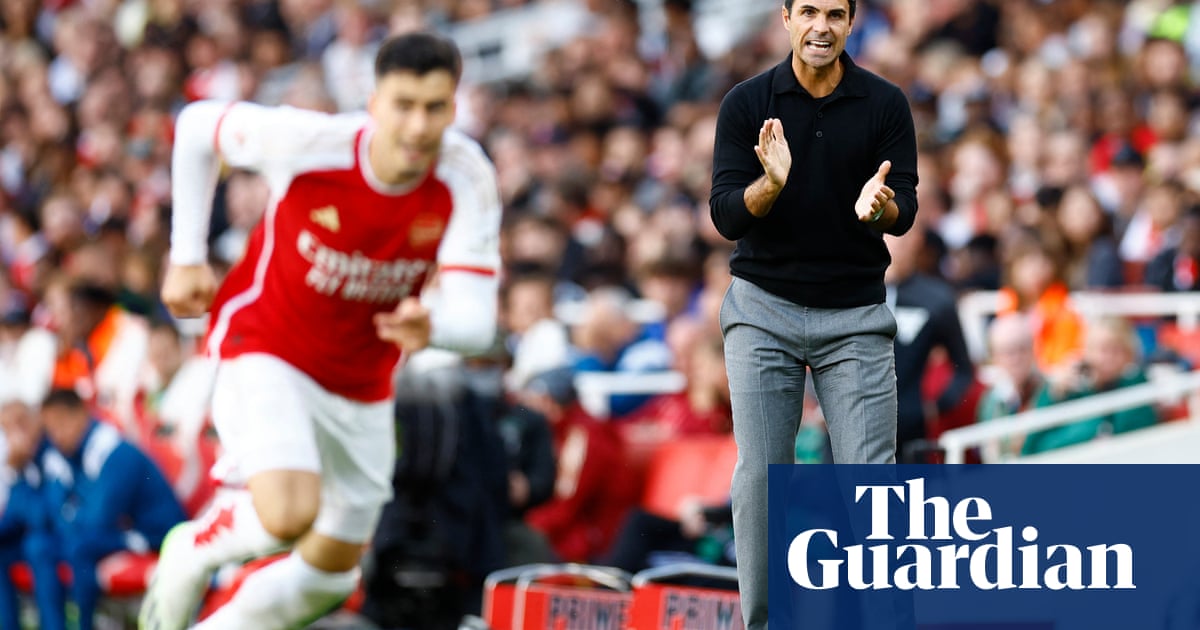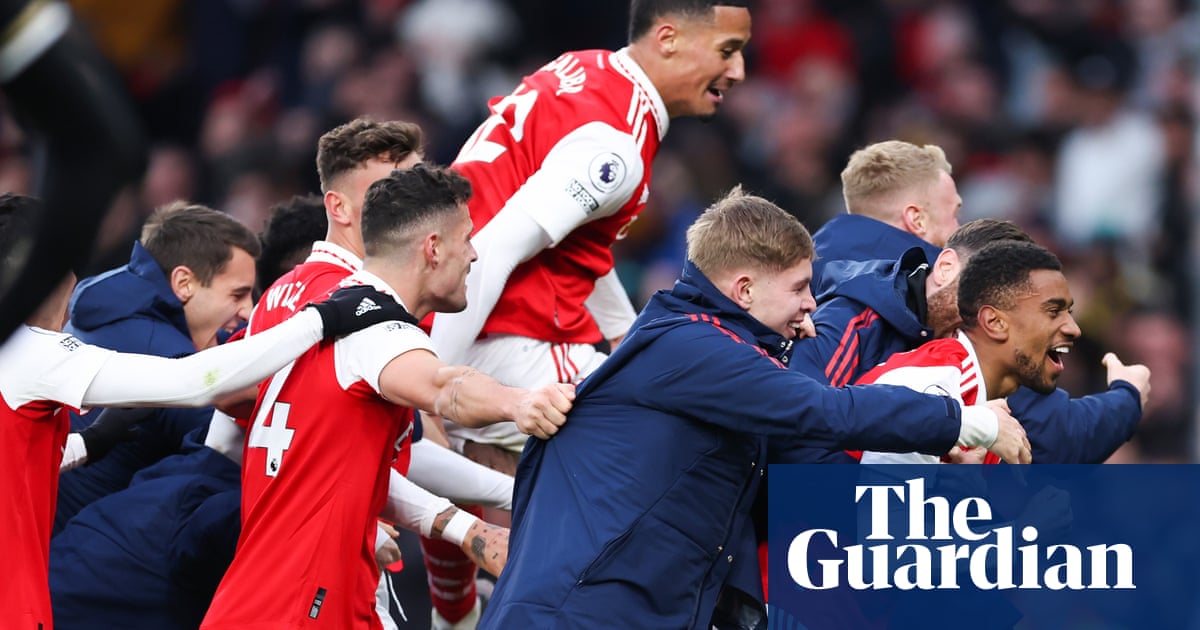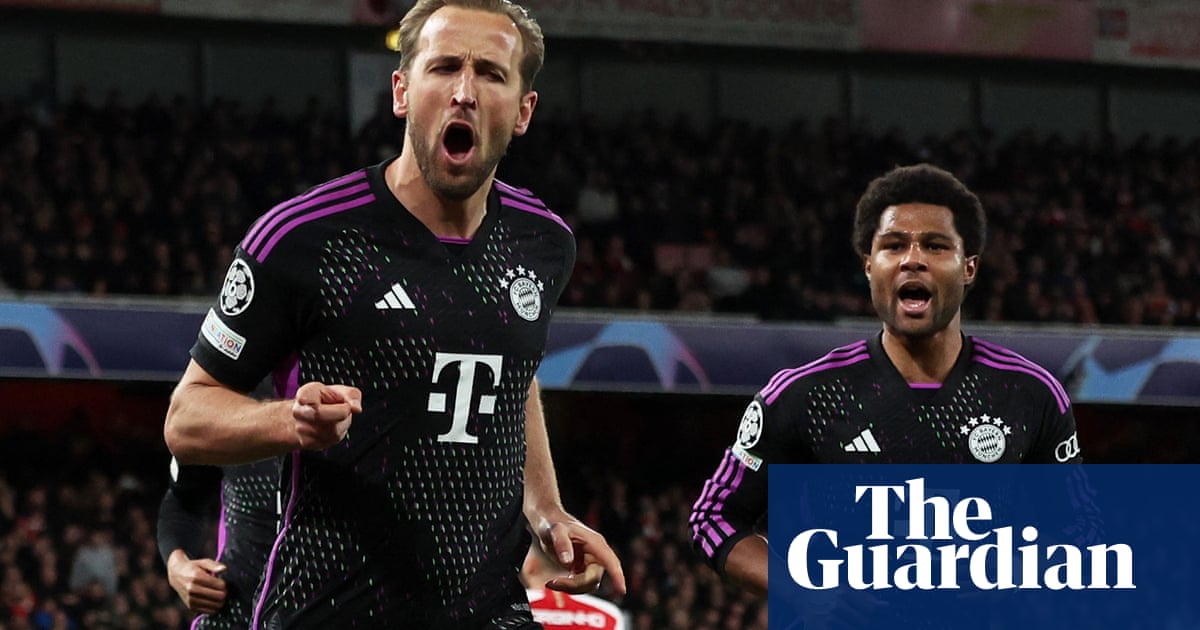
ou could make your own jokes on Thursday when Mikel Arteta was forced to postpone his pre-match press conference for Sunday’s north London derby. The Arsenal manager’s wifi had apparently been playing up all day and it seemed some kind of local power outage was more of an issue, at that moment, than well-worn questions about the local balance of power. “Technical issues” was the reason given.
Arteta knows all about those, in a different sense. When he took over before Christmas it was hard to know where he should start: technically, tactically and temperamentally, Arsenal were a mess and Arteta was keenly aware. Their mentality was wrong and the biggest job, he felt, was to engage the players’ brains in a way that swept them along with him. “I want to do things my way,” he said at his unveiling. “But by convincing them it’s the right way for everybody to live better.”
For half an hour against Leicester on Tuesday, Arteta’s starting XI certainly appeared to be living their best lives. They should have added to Pierre-Emerick Aubameyang’s goal but this was their most consistently threatening period in a league game all season, the ball recycled crisply, urgently and intelligently. It was the kind of football that takes you places: ambitious but diligent; direct but intricately mapped. Arsenal cannot yet sustain that over 90 minutes but it felt like a tantalising snapshot of days to come.
Was this the closest we have seen to a Mikel Arteta side? “I want to be the Arsenal team, not the Mikel Arteta team,” he said on Friday, through a fully functioning video link, but he did not disabuse anyone of the overriding notion. “I want the players to play that way as much as possible during the games, to be in the opposition’s half, to be very aggressive every time.”
The uptick in aggression is clear. Before Arteta’s arrival, Arsenal turned their backs on opposition goalkeepers’ clearances. Now they see them as scoring opportunities. The two goals that have delighted him most in recent weeks are the tap-ins converted by Eddie Nketiah against Southampton and Aubameyang, six days later against Norwich, after chasing down dawdling keepers. They were grievous blunders from an opposition perspective but for Arteta their proximity was vindication. “It’s good these things actually happen in games because it helps convince the players,” he said last week.
There it was again: the emphasis on cajoling players in his direction. Arteta’s ability to convey messages relatably is among his strongest suits and has helped to ensure Aubameyang has a complicated decision to make about his next contract. But people respond best when directly involved in the consequences attached to those words. It is a simple idea but there is no purer sign of a coaching schema paying off than when tactical expositions become, via practice, proven means of winning games.
The learning environment under Arteta is described by one figure close to it as “testing but rewarding”. If a young player shows the correct aptitude he will ensure they know and that they are progressed accordingly. His use of Bukayo Saka, already proficient as a left-back or a winger, in four positions since the restart has owed partly to Arsenal’s unbalanced resources but also to his vision of what a singularly intelligent footballer might glean. Nketiah, rarely favoured by Marcelo Bielsa with Leeds, was so hungry and receptive since returning from his loan that Arteta has looked past deficiencies in his all-round game to let him learn on the job at centre-forward.
In December the teacherly “non-negotiables” became cast as one of Arteta’s buzzphrases. More recently he has favoured the stipulation that players are “on the boat”. It has arisen in the context of Mattéo Guendouzi, who has been training separately because of perceived attitude problems, and the ever-perplexing case of Mesut Özil.
Among Arteta’s early successes has been the re-energising of Granit Xhaka and Shkodran Mustafi. The sense remains that neither is a perfect long-term solution but, for Arteta, a willingness to engage comes first. “I will have everyone 120% committed, that’s the first thing. If not, you don’t play for me,” he said in the much-cited 2014 interview that foretold his approach to management.
The intensity he demands has not always been channeled perfectly. Nketiah’s red card against Leicester, which may have cost them the game, was their fourth in the league since his appointment. That is a consequence, he thinks, of the outlook they are still perfecting.
“The aggression is not towards the opponent at all but it is our aim to control the situations, to be willing all the time, to win the ball, to attack better,” he explained. They did not manage it on Tuesday: a frayed second half, hindered by that dismissal, contributed to a passing accuracy of 74.3%, by some distance their lowest of the season.
It was instructive, though, that their most frequent combination was a pass from Xhaka to Kieran Tierney, their left wing-back. That was followed by a ball from Xhaka to Aubameyang, the left-sided forward. Arteta wants his players to be tigerish in the middle and then decisive in utilising speed out wide. It was worth listening to the rest of his answer regarding how closely that first-half purple patch reflected his aims.
“When we give the ball away [we] always have in mind to win the ball back and always attack the opposition box and goal,” he said. “To do that we need a really good structure, to attack the right spaces and generate overloads, as well as to be able to contain the opposition.”
Arteta knows Arsenal need significant improvement, and preferably a healthy summer of transfer activity, to deliver the full package and has referred to the tentative first year he and Pep Guardiola spent at Manchester City before accelerating that project beyond recognition. But another display of fierce intent in their first visit to the Tottenham Hotspur Stadium would heighten the impression that, on the pitch if not via his broadband, he is forging the right connections.












